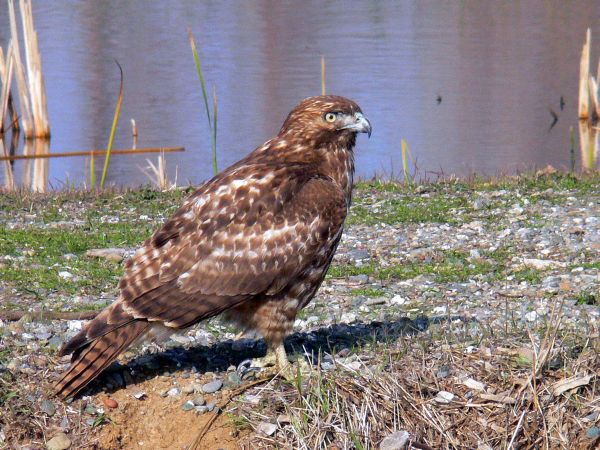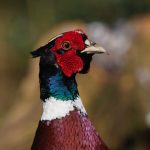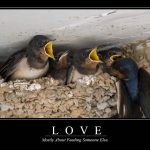
Last Saturday, the Janet L. Swanson Wildlife Health Center received an adult male Red-tailed Hawk that had been found on Cornell University’s campus. The bird’s injured wing proved, when x-rayed, to be badly broken – so badly that even with treatment he would never be able to fly again. On Sunday March 19 2017, he was euthanized.
A few days later the Cornell Laboratory of Ornithology contacted the Wildlife Health Center to ask if they’d received any red-tails recently. The male from the pair featured on one of the Lab of O’s beloved webcams – Ezra to his fans – had been absent for days and viewers were worried. Their fears were confirmed. The deceased hawk was definitively identified as Ezra, who had been banded in 2006.
When I read the news I felt a twinge. Only a little for Ezra, whose suffering was quickly ended, and certainly not for Red-tailed Hawks as a whole – the species is numerous, widespread, adaptable, and not in a position to be devastated by the loss of a single breeding individual. But I’d been through a very similar event when I lived in Montana and worked for Days at Dunrovin, and I knew that many of the people involved would take the situation very hard.
Nest cams are a powerful educational tool in part because they encourage people to bond with individual animals, and the pluses and minuses of that have been widely discussed in the past. It’s easy to roll one’s eyes at the notion of “bunny huggers” who aren’t prepared for the harsh realities of nature, but the last thing in the world we want to see is a population completely inured to the idea of avian suffering – how can we motivate people to care passionately about window strikes or the depredations of feral cats or deadly pits of mining waste, if they don’t start with a seed of sorrow at the sight of a dead bird? Walking the line between acknowledging this real and valuable impulse and encouraging undue anthropomorphism is a balance everyone who communicates with the public about nature has to grapple with at one time or another, I think. And in fact the nest cam audience reacted, with sorrow yes, but also with intelligence and dignity. There were a lot of tears and a few questions about why Ezra wasn’t kept in captivity as an education bird, but the majority of concern was for the future of Ezra’s mate Big Red and the coming breeding season, and there was much reflection about what the hawk-watchers had learned from Ezra and from each other.
So although I was only brushed by the wing-tip of this story, I was grateful to read an update on Friday that Big Red was seen courting another male. And perhaps the thought “She deserves to be happy”, however sentimental that may be, crossed my mind.
Featured image: Red-tail (not Ezra) by Lee Karney, courtesy of the USFWS.













Correction – March 19, not May…
Well crud, I need to stop time-traveling so much.